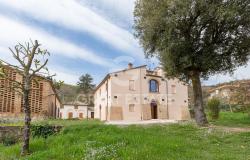Reversing the previous government's zero tolerance approach to drugs, new Welfare Minister Paolo Ferrero said on Monday that Italy could introduce trial drug consumption centres for heroin addicts. Ferrero, who confirmed the government's plans to overhaul Italy's tough new drug law, said he was "not opposed" to the idea of the so-called 'shooting galleries'.
"First we have to remove the poison created over the past five years by the criminalisation (of drug users) and then we have to experiment and see what has been done in other countries to reduce addiction damage," Ferrero, a member of the Communist Refoundation Party, said in a radio interview.
Shooting galleries are special centres where heroin and crack addicts can inject themselves in supervised, hygienic conditions thereby reducing the risk of disease and overdose. Advocates of the centres say they help prevent drug-related deaths, cut the health hazards associated with needle use and sharing and are safer in general for addicts.
They say they have advantages for society as a whole in that they reduce the number of addicts shooting up in public and the amount of hazardous used needles and other drug-related litter discarded in public places. Some eight countries worldwide, including Switzerland, Germany, Spain, Australia and Canada, have introduced supervised drug consumption centres.
But the International Narcotics Control Board (INCB), the independent agency tasked with implementing United Nations drug conventions, is against the centres, saying that they come too close to hard-drug legalisation and undermine the prohibitionist policies outlined in UN conventions.
The centre-right opposition immediately blasted the idea of opening shooting galleries in Italy.
Former minister for relations with parliament Carlo Giovanardi, who helped draw up the current drug law, said that "with this talk of liberalisation and shooting galleries, Ferrero is demolishing the cornerstones of anti-drug policies, namely prevention, the rehabilitation of addicts and the crackdown on drug dealing".
The rightist National Alliance (AN) and opposition chief Silvio Berlusconi's Forza Italia party echoed the criticism, demanding an immediate parliamentary debate on the issue. Ferrero also raised the opposition's hackles by saying that many professionals including politicians used cocaine.
"It's obvious that drugs circulate among (some) politicians... perhaps that's why the drug possession thresholds set by the last government were more permissive where cocaine was concerned compared to cannabis," the minister said.
Opposition MP Gianfranco Rotondi commented: "I would say that Ferrero sniffed a bit of cocaine himself before he gave this offensive interview". The law passed by the previous government in February enshrines a "zero tolerance" approach to all types of drugs.
It makes possession of hard and soft ones a potentiallycriminal offence with jail terms ranging from six to 20 years for suppliers. Personal users do not escape punishment, as in the past, but penalties are mild: ranging from an official warning to
temporary confiscation of driving licenses and passports. However, the thresholds for drug possession have been blasted as too low.
These thresholds are: 500mg for cannabis (the equivalent of 15-20 joints), 750mg for cocaine (or some 5 doses), 250mg
for heroin (or some 10 shots), 750mg for ecstasy (or five tablets), 500mg for amphetamines and 150mg for LSD. People caught with more than these quantities automatically face criminal proceedings for dealing unless they can prove that personal use only is intended. The law has also sparked controversy because it overrides a 1993 referendum in which Italians voted to decriminalise the use of drugs, allowing only pushers and traffickers to be prosecuted.
When it was passed, supporters said it marked the end of tolerance towards marijuana users and affirmed the principle that all drugs are bad. They also dismissed critics' claims that 'recreational' drug users would be penalised. But opposition MPs attacked the regulated amounts, saying they were far too low and could result in thousands of soft drug users being sent to prison.
They noted that very few European countries define specific quantities as thresholds for criminal proceedings and argued that even in the states that did, the amounts were consistently higher than those that had been introduced. Critics also stressed that it was a habit for many youngsters to buy drugs for their friends as well as themselves and that they now unwittingly risked being classed as dealers.
The law has been greeted mostly with dismay by drug treatment professionals. Like their colleagues in other countries, they have been arguing for years that treatment should be given a much higher priority than incarceration. Treatment specialists said the main problem facing Italy was a 80% rise in cocaine use in the past 10 years.
According to recent statistics, 33% of Italian teenagers between the ages of 15 and 19 have smoked pot at least once, while 10-12% have tried cocaine, 11% ecstasy and 7-10% crack. Among adult Italians, almost 10% are reported to use pot
on a regular basis. There are an estimated 300,000-320,000 heroin addicts in Italy, more than 20,000 of whom are in jail. In 2001, 150,300 Italians were treated for drug addiction.












